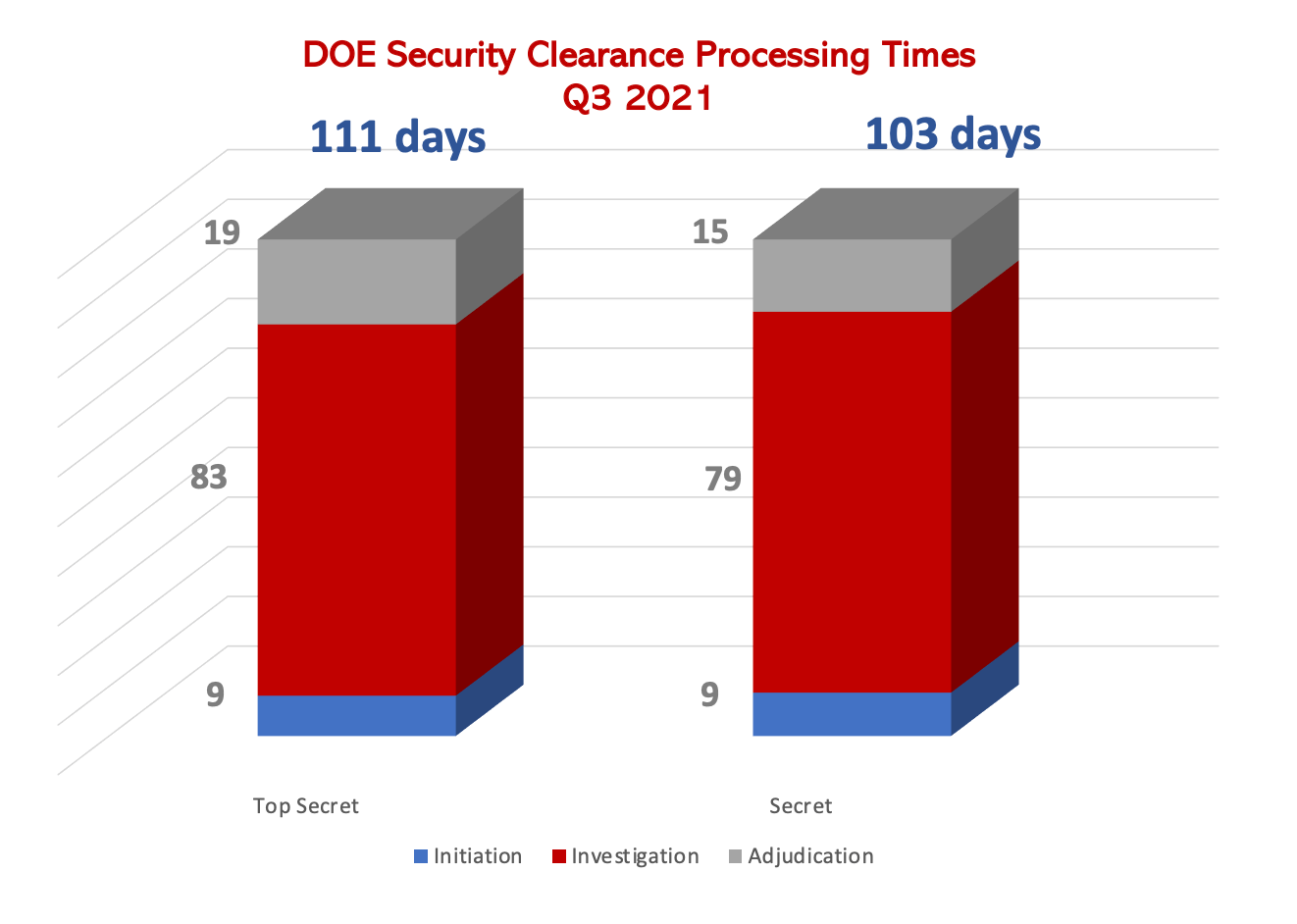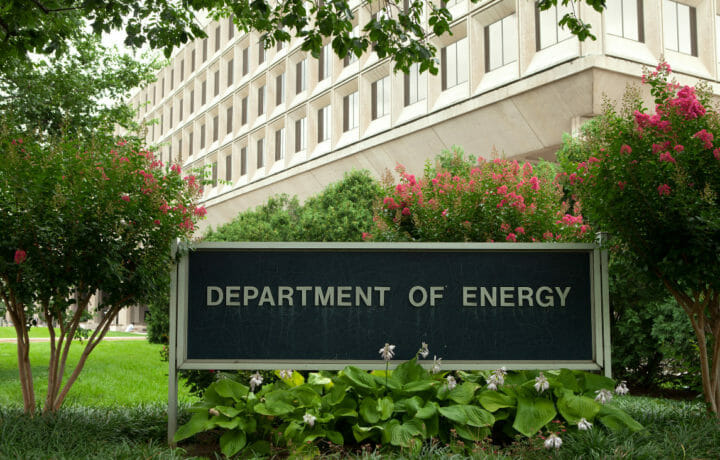The Department of Energy continues to use science and technology to advance energy, environment, and nuclear security. Most Americans think of the climate debate when they talk about the Department of Energy, but there’s more to the department. Recently, the DOE shared their timeliness performance metrics. The DOE reported adjudication actions for 2,700 Top Secret and Secret clearances in the third quarter of fiscal year 2021, which is a significant increase from prior quarters. Despite the increase in adjudication actions, DOE timeliness improved in Q3, dropping almost 30 days for Secret clearances and 7 days for Top Secret clearances. Despite the increase in cases, the department is tightening up the timeline.
Department of Energy FY21 Q3 Processing Times
The chart below shows the processing times for the DOE’s Fiscal Year (FY) 2021 3rd quarter for a Top Secret and Secret clearance. DOE had a goal of 114 total days for Top Secret clearances and 74 days for Secret clearances. While Top Secret timelines are performing better than the goal, Secret clearances are moving slower, specifically in the investigation stage. DOE has a goal of 40 days for the Secret investigation, which is half the time estimated for the Top Secret level. However, Secret clearance timelines have improved from Q2 by 31 days.

Minding Your L’s and Q’s
While the nuclear program requires a clearance, so do other energy programs. Ideally, with the concept of reciprocity, a final Secret Clearance would translate to an L access authorization, and final Top Secret clearance with the DoD should translate to a job at the DOE with a Q access authorization. A higher clearance requires a new investigation too. So, as long as you’re applying for the same level, you’ll just need a drug test within 60 days of the request and a signed DOE F 5631.18.
It may seem confusing that DOE uses different terms for their security clearances. DOE notes that different terms are need because the department is granting access to Restricted Data and special nuclear material. So, in order to distinguish the differences in classified information, the DOE uses different terminology: Q for Top Secret and L for Confidential and Secret. However, should a clearance holder require access to Secret Restricted Data, DOE grants a Q access authorization.




